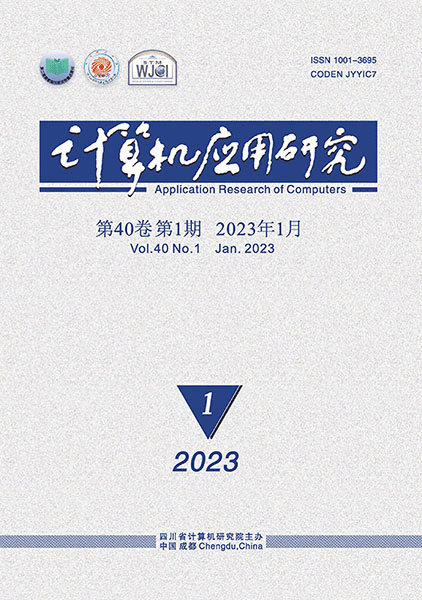Channel and spatial joint attention based defect detection method in complex texture ceramic tile
Channel and spatial joint attention based defect detection method in complex texture ceramic tile
1. State Key Laboratory of Public Big Data, Guiyang 550000, China
2. a. School of Computer Science & Technology, b. School of Mechanical Engineering, Guizhou University, Guiyang 550000, China
3. School of Data Science, Guizhou Institute of Technology, Guiyang 550000, China

摘要
In the complex texture of the tile surface, there are more low-visibility small defects, and the interference from the complex textured background is serious. This results high false detection and false alarm rate using traditional object detection methods. To enhance the efficiency of defect detection, this paper proposed a defect detection approach on complex textured tile surfaces based on the joint attention mechanisms of channels and spatial. Firstly, to enhance the feature expression of small defects, it proposed a selective feature fusion method by modeling the relationship between deep and shallow feature channels. Secondly, it designed a joint channel and spatial attention module that selected key feature channels and suppressed texture regions through channel and spatial attention, enabling the model to focus on learning defect features and enhancing its ability to discriminate between defects and texture. Finally, it validated the approach on a dataset of complexly textured ceramic tile surface defects. The experimental results demonstrate that compared to the AFF and CBAM methods, the selective feature fusion method and channel & spatial joint attention achieved improvements of 5.3 AP and 6.32 AP, respectively. In addition, this paper compared the overall approach with the existing tile detection method YOLOv5 and texture fabric defect detection method AFAM. The results show that it outperforms these methods, with respective improvements of 1.32 AP and 2.12 AP.
基金项目
国家自然科学基金资助项目(62162010,72161005)
贵州省科技资助项目(黔科合支撑[2021]一般449,黔科合基础-ZK[2022]一般184,黔科合支撑[2022]一般271,黔科合成果[2023]一般010)
出版信息
DOI: 10.19734/j.issn.1001-3695.2023.06.0303
出版期卷: 《计算机应用研究》 Printed Article, 2024年第41卷 第3期
所属栏目: Technology of Graphic & Image
出版页码: 944-950
文章编号: 1001-3695(2024)03-046-0944-07
发布历史
引用本文
叶旭芳, 陈梅, 李晖, 等. 基于联合注意力的复杂纹理瓷砖缺陷检测方法 [J]. 计算机应用研究, 2024, 41 (3): 944-950. (Ye Xufang, Chen Mei, Li Hui, et al. Channel and spatial joint attention based defect detection method in complex texture ceramic tile [J]. Application Research of Computers, 2024, 41 (3): 944-950. )
关于期刊

- 计算机应用研究 月刊
- Application Research of Computers
-
刊号
ISSN 1001-3695
CN 51-1196/TP
《计算机应用研究》创刊于1984年,是由四川省科技厅所属四川省计算机研究院主办的计算技术类学术刊物。
《计算机应用研究》瞄准本学科领域迫切需要的前沿技术,及时反映国内外计算机应用研究的主流技术、热点技术及最新发展趋势。主要刊载内容包括本学科领域高水平的学术论文、本学科最新科研成果和重大应用成果。栏目内容涉及计算机学科新理论、计算机基础理论、算法理论研究、算法设计与分析、区块链技术、系统软件与软件工程技术、模式识别与人工智能、体系结构、先进计算、并行处理、数据库技术、计算机网络与通信技术、信息安全技术、计算机图像图形学及其最新热点应用技术。
《计算机应用研究》拥有众多高层次读者、作者,读者对象主要为从事计算机学科领域高、中级研究人员及工程技术人员,各高等院校计算机专业及相关专业的师生。多年来《计算机应用研究》的总被引频次及Web下载率一直名列本学科同类学术刊物前茅,所刊发的学术论文以其新颖性、学术性、前瞻性、导向性、实用性而备受广大读者的喜爱。
收录和评价
- 第二届国家期刊奖百种重点期刊
- 中国期刊方阵双效期刊
- 全国中文核心期刊(北大2023年版)
- 中国科技核心期刊
- 中国科学引文数据库(CSCD)来源期刊
- RCCSE中国核心学术期刊
- 中国计算机学会会刊
- 2020—2022年科技期刊世界影响力指数(WJCI)报告收录期刊
- 中国科技期刊精品数据库全文来源期刊
- 中国学术期刊综合评价数据库来源期刊
- 《中国期刊网》《中国学术期刊(光盘版)》来源期刊
- 2017—2019年中国国际影响力优秀学术期刊(自然科学与工程技术)
- 中国精品科技期刊顶尖学术论文(F5000)项目来源期刊
- 《中国工程技术电子信息网》《电子科技文献数据库》来源期刊
- 英国《科学文摘》(INSPEC)来源期刊
- 《日本科学技术振兴机构数据库》(JST)来源期刊
- 俄罗斯《文摘杂志》(AJ, VINITI)来源期刊
- 美国《艾博思科学术数据库》(EBSCO)全文来源期刊
- 美国《剑桥科学文摘(自然科学)》(CSA(NS))核心期刊
- 波兰《哥白尼索引》(IC)来源期刊
- 美国《乌利希期刊指南(网络版)》(Ulrichsweb)收录期刊





